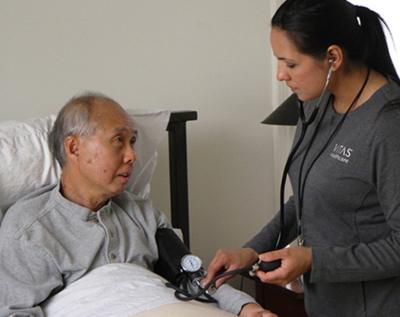Reinforcing Hospice Facts: Hospice and the Use of Morphine
By Maite Hernandez, RN, National Director of Sales Training, VITAS Healthcare
The truth is that not everyone on hospice services receives morphine. The administration of morphine or any other medication in hospice care depends on the individual needs and symptoms of each patient. Morphine is commonly used in hospice care to manage severe pain and shortness of breath, but it is not given to all patients receiving hospice services.
What Is Morphine? Why Use It at All?
Morphine is a powerful, effective medication used to relieve severe pain and other symptoms. While a common misconception about morphine is that it is used primarily in hospice, morphine is also used in various other medical settings.
For example, morphine is often used in hospitals to manage pain after surgical procedures, accidents, fractures, or other traumatic injuries. Individuals who suffer a myocardial infarction (heart attack) may require morphine to manage severe chest pain and anxiety. In these settings, morphine is administered in the vein (IV) or subcutaneously (Sub Q). No matter the location of care—whether it is in a hospital, palliative care, or at home on hospice—the goal when administering morphine is to maximize patient comfort, ensure safety, and minimize the risk of side effects and/or complications.
Individualized Plans of Care
Hospice care focuses on providing comfort and improving the quality of life for patients with advanced illnesses. The clinical care team, which typically includes doctors, nurses, and other healthcare professionals, works closely with the patient and their family to determine what their care goals, wishes, and preferences are and develops a personalized care plan that addresses the patient's specific symptoms. This individualized care plan may or may not include morphine, depending on what is best for the patient's comfort and symptom management. If the care plan does include morphine, the dosage is carefully titrated to achieve symptom relief and comfort while minimizing side effects.
To empower patients and families in their serious illness continuum and ease their concerns about the common misconceptions of hospice care and the use of morphine, the VITAS clinical team provides ongoing education focused on the patient’s symptoms and on the medication(s) prescribed. As families receive this education and support, they have opportunities to ask questions and learn what to expect. This may include discussing how morphine works, its benefits, potential side effects, and more.
How Pain Medications Help Hospice Patients
Contrary to common beliefs, hospice is not the end. It's not giving up. It's the beginning of a new journey. When morphine or other pain medications are prescribed appropriately, patients can experience relief from pain, leading to better quality of life. The hospice clinical care team works diligently with expertise and compassion so patients can spend the time they have left enjoying the people and things they love most.
Why Reinforcing Hospice Facts Is Important
Many people have misconceptions about hospice care, such as believing it is only for the very last days of life or that it means giving up on treatment. Research published in the Journal of Pain and Symptom Management found that Medicare beneficiaries who opted for hospice care lived an average of 29 days longer than similar patients who did not take advantage of hospice.1 In reality, “greater utilization of hospice during the last six months of life is associated with improved patient experience and clinical outcomes.”2
Reinforcing the facts about hospice can help correct these misunderstandings. Hospice-eligible patients deserve to have the opportunity to receive accurate and timely information about the Medicare Hospice Benefit and their right to access it earlier in their disease trajectory. Making timely, informed decisions about end-of-life can help families prepare and align care with the patient’s care goal wishes, values, and preferences.
1 Connor, S., et al. (2007). Comparing hospice and nonhospice patient survival among patients who die within a three-year window. Journal of Pain and Symptom Management, 33(3), 238-246.
2 Kleinpell, et al. (2019). Exploring the association of hospice care on patient experience and outcomes of care. BMJ Supportive & Palliative Care, 9(1), e13-e13.

Check Hospice Guidelines
Get diagnosis-specific guidelines in our hospice eligibility reference guide.
Hospice Guidelines by Diagnosis
